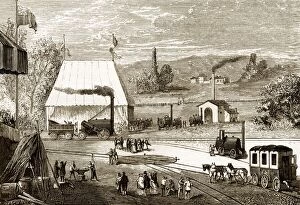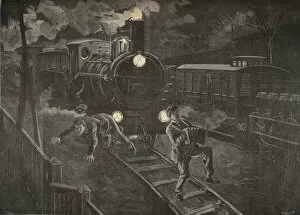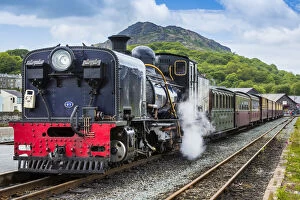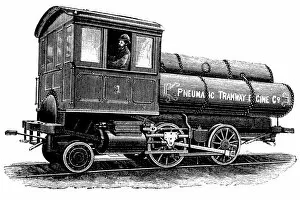Train Engine Collection
"Revolutionizing Transportation: The Train Engine's Historic Journey" Step back in time to the Rainhill Trials of October 1829
All Professionally Made to Order for Quick Shipping
"Revolutionizing Transportation: The Train Engine's Historic Journey" Step back in time to the Rainhill Trials of October 1829, a pivotal moment in the history of train engines. These trials marked a significant milestone as locomotives competed to prove their worthiness for passenger transportation. Witnessing this fierce competition was George Stephenson, a British engineer whose brilliance would forever change the world. Intriguingly captured by an illustration from Le Petit Journal: Supplement illustre, we see two men caught in awe-inspiring wonder as they witness the power and speed of these magnificent machines. Little did they know that this event would shape the future of transportation. Fast forward to Welsh Highland Railway in Porthmadog, Gwynedd, Wales - a place where dreams became reality. Here lies evidence of countless hours spent perfecting every detail of these iron horses that conquered mountains and valleys alike. The names Fell mountain railway system and Riggenbach cog railway system evoke memories of innovation during the 1880s when engineers pushed boundaries to conquer challenging terrains with their ingenious designs. But it wasn't just steam-powered locomotives that left their mark on history; Hardie compressed air locomotive emerged during this era too, showcasing alternative technologies that were explored with equal enthusiasm. However, let us not forget Hedley's Puffing Billy - an early pioneer born way back in 1813. This humble yet remarkable creation laid down foundations for what was yet to come – proving that even small beginnings can lead to monumental achievements. And then there was Stephenson's Rocket - an iconic symbol representing progress and triumph. In 1829, its sleek design and incredible performance at Rainhill Trials solidified Stephenson's legacy as one of Britain's greatest engineers ever known. Before all these marvels came into existence though, there was another groundbreaking invention – Stephensons' locomotive from 1815.










